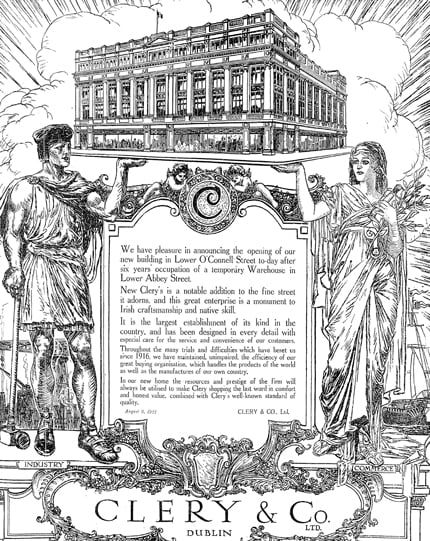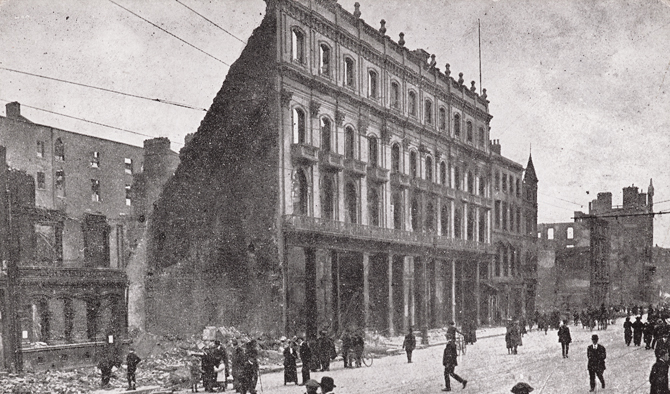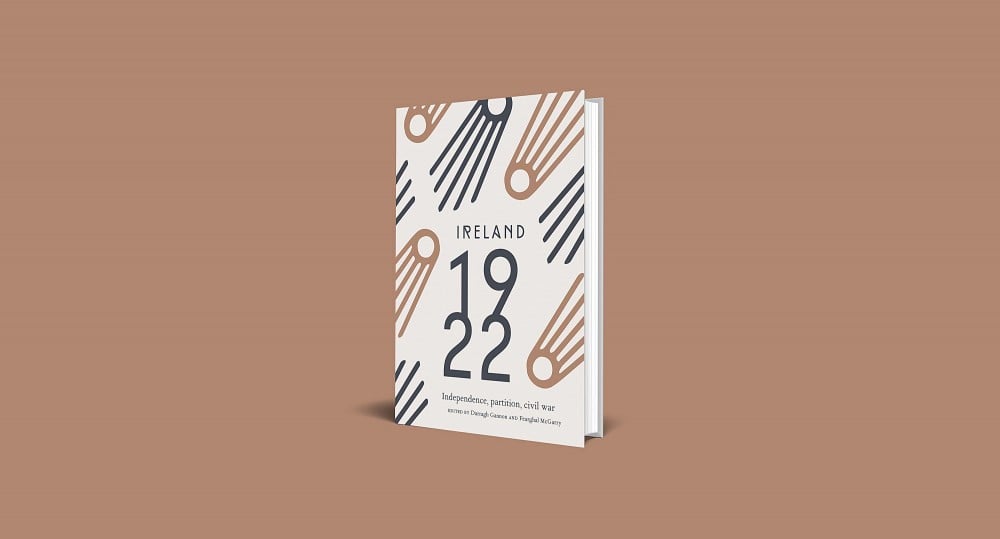9 August 1922: The Reopening of Clery’s Department Store
The Mundane and the Traumatic: Ordinary life in Extraordinary Times
By Fionnuala Walsh
On Wednesday, 9 August 1922, an advertisement for Clery’s department store adorned the full front page of the Irish Independent, announcing the store’s reopening in Dublin. ‘New Clery’s’ was in the same location on lower O’Connell street as the earlier store, which had been built in 1853 but suffered extensive damage in the Easter Rising. A British shell hit a barricade on Lower Abbey Street causing a fire, which spread to Clery & Co. and destroyed the entire building. After six years’ occupation of a temporary warehouse during the ‘many trials and difficulties that have beset us since 1916’, the largest department store in Ireland was ready to open its doors again. Clery’s sold all the luxury items one might want—hosiery, silk, ribbon and flowers, millinery, carpets, tailoring and much more. The original shop had been the first of Dublin’s larger stores to fit electric lights, installing them in 1892 to support evening shopping. ‘New Clery’s’ continued this trend, advertising its modern facilities—electric passenger lifts and ‘beautifully appointed toilet rooms for both lady and gentlemen customers’. Clery’s had also led the way with the introduction of its internal phone system and switchboard some years previously, and an earlier advert on 5 August noted they now had a new telephone number with five separate lines.¹ The principal owner of Clery & Co. in 1922 was Dr Lombard Murphy, the son of William Martin Murphy, and the family retained ownership of the Irish Independent newspaper, hence its prominent placing of adverts for the store.²
The Evening Herald, another Murphy family publication, described on 9 August how Rev. Father Flanagan from Marlborough street visited and blessed the premises before the doors opened to let in the waiting crowds, who enjoyed their shopping as a ‘first-class orchestra’ played in the background. The reopening of this modern, glamorous building seemed to herald new beginnings after destruction. The only slight allusion to the events that destroyed the original Clery’s premises and the ongoing conflict was the emphasis placed on providing the new building with immunity from fire. The building’s walls were fire-proof, the windows had fireresisting glass and the sprinkler system covered every room from the roof to the basement. Its owners did not want to risk the damage experienced in the Rising, during which one eye-witness, Oscar Traynor, described seeing the ‘huge plate-glass windows of Clery’s stores run molten into the channel from the terrific heat’.³
The new building cost £400,000, half of which came from British government compensation for damage inflicted during the Rising. Clery’s availed of modern technologies in rebuilding the store, providing a bridge between the traditions of its origins and the future it looked towards. It was described by The Irish Times on 10 August as ‘one of the most important works of reconstruction in Dublin’. Irish Life magazine reported in September 1922 that Dubliners were ‘very proud of the new Clery’s which had risen up to adorn poor, knocked about Sackville street’. The confident view of Dublin it represented, however, was still notably precarious in August 1922. Heavy fighting had taken place in Dublin just over a month previously, with areas of Upper O’Connell street again destroyed in the ‘Battle of Dublin’. The reconstruction of Clery’s was fortunate to escape a further fire: another building on the street, the Hamman Hotel, was utterly destroyed by shells and fire and many others suffered very significant damage.⁴

Frontpage advert for the reopening of Clery’s department store, Irish Independent, 9 August 1922 (Image: Irish Newspaper Archives; courtesy of National Library of Ireland)
Dublin city began to assess the damage and once again began the process of reconstruction in the aftermath, but the civil war fighting continued in other counties of Ireland with no clear resolution in sight. Notices about Clery’s reopening jostled for space with reports of a raid by ‘Irregulars’ of the train from Enniskillen to Sligo, photographs of Free State troops departing Dublin, and a map of ‘the war area in the south’.⁵ In addition, Clery’s had re-opened at a time when ‘nearly everyone is suffering financially by the disorder in the economic life of Ireland’, making it difficult for the store to prosper.⁶ Many firms were on the verge of bankruptcy by August 1922, having suffered from the ‘blockading of roads, the cutting of railway communication and the wrecking of bridges’.⁷ Merchants were having difficulty securing payments from their customers and supplying goods due to the civil disorder. The increased cost of living was also having a negative impact, inevitably resulting in less disposable income available for the sort of commodities sold by Clery’s.⁸ The greatest threat, however, came from the ongoing conflict in Ireland. The opening of the new premises was also reported in the Nenagh News on 12 August in a short article immediately following a report of a meeting of the Ballybrophy branch of the National Union of Railwaymen, at which the actions of the ‘irregulars’ were roundly condemned. The chairman of the meeting asserted that
the foundation on which civilisation rested was ordered government—that the security of life, the security of person, individual rights, development and progress rested on a well-ordered government established by the people and failing that they could only view the future with despair.
This mingling of the mundane and the traumatic is evident in Irish Life magazine in 1922. In August the magazine reported that the general topic of conversation was the Dublin Horse Show and the good news that, despite rumours of postponement or cancellation, it was to proceed in the middle of the month. The reporter argued that for ‘Ireland to have been deprived of its greatest carnival would have been an unthinkable calamity’. He viewed the horse show as an opportunity to ‘forget the dark clouds that are slowly dispersing’ and to ‘imagine we are back once more in those grand and wonderful days when men and women breathed freely’. The following month Irish Life carried an image of Michael Collins on its front cover with the caption ‘The dead leader’. The ‘Town and Country column’ lamented the loss of Collins, worrying that the bullet ‘is out to kill the Treaty and blast Ireland’. The columnist, however, quickly moved to other matters, notably the success of the Dublin Horse Show. Despite the deaths of Arthur Griffith and Michael Collins, the Horse Show did go ahead, along with the annual Liffey Swim, which had been postponed in July due to the fighting.
A few short weeks after the reopening of Clery’s, O’Connell street thronged with thousands of people as they watched the coffin of Michael Collins being brought from City Hall to Glasnevin Cemetery. It is believed that 500,000 people came out to pay their respects for his funeral on 28 August. Postcards reproduced in the months afterwards reveal the huge crowds in the city. For nine hours people filed past his body as it lay in state at City Hall. Once again the mundane and the political intertwined: Dublin builders gained a temporary postponement on promised wage cuts out of respect for the loss of Collins.⁹ Businesses were closed across the city as ‘no one had the heart to engage in business of any kind’ and ‘no one felt any inclination for feasting or amusement’.¹⁰ The excitement and optimism generated by the opening of the new Clery’s store stood in stark contrast to the communal mourning evident in Dublin a few short weeks later, with Collins’s death serving as a grim reminder of the difficulties of achieving peace.
Extracted from Ireland 1922 edited by Darragh Gannon and Fearghal McGarry and published by the Royal Irish Academy with support from the Department of Tourism, Culture, Arts, Gaeltacht, Sport and Media under the Decade of Centenaries 2012-2023 programme. Click here to view more articles in this series, or click the image below to visit the RIA website for more information.






















